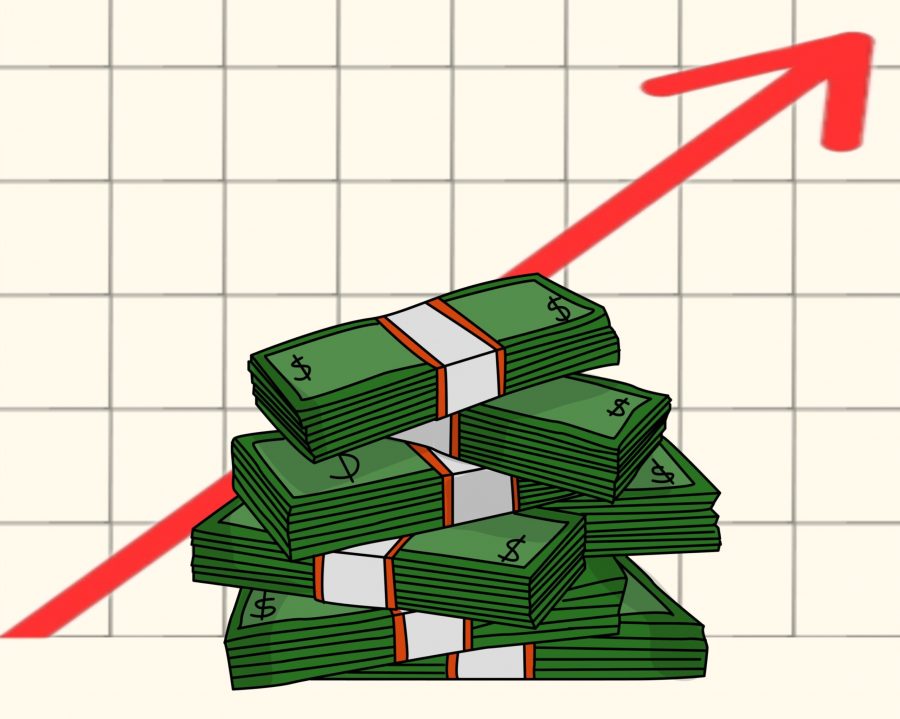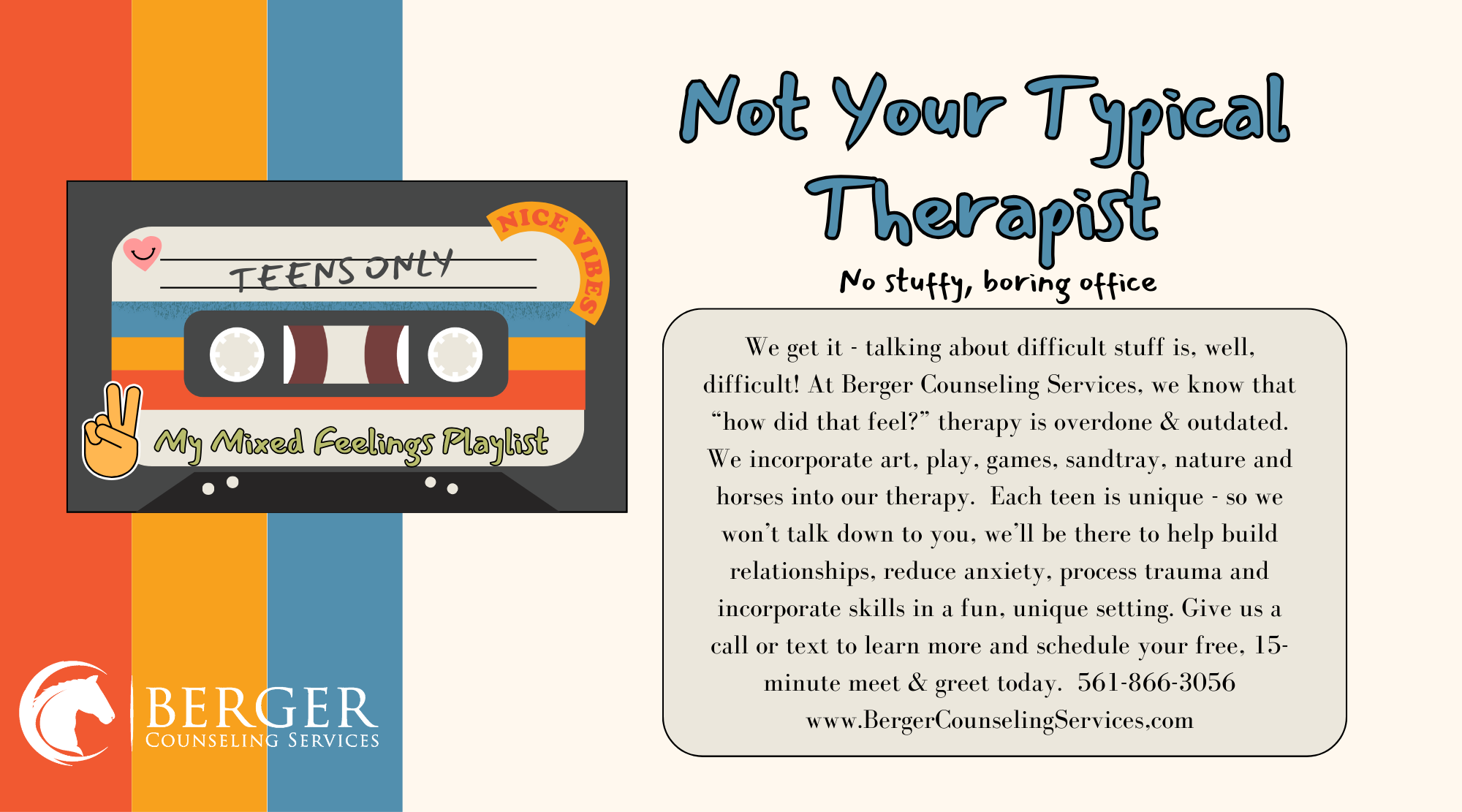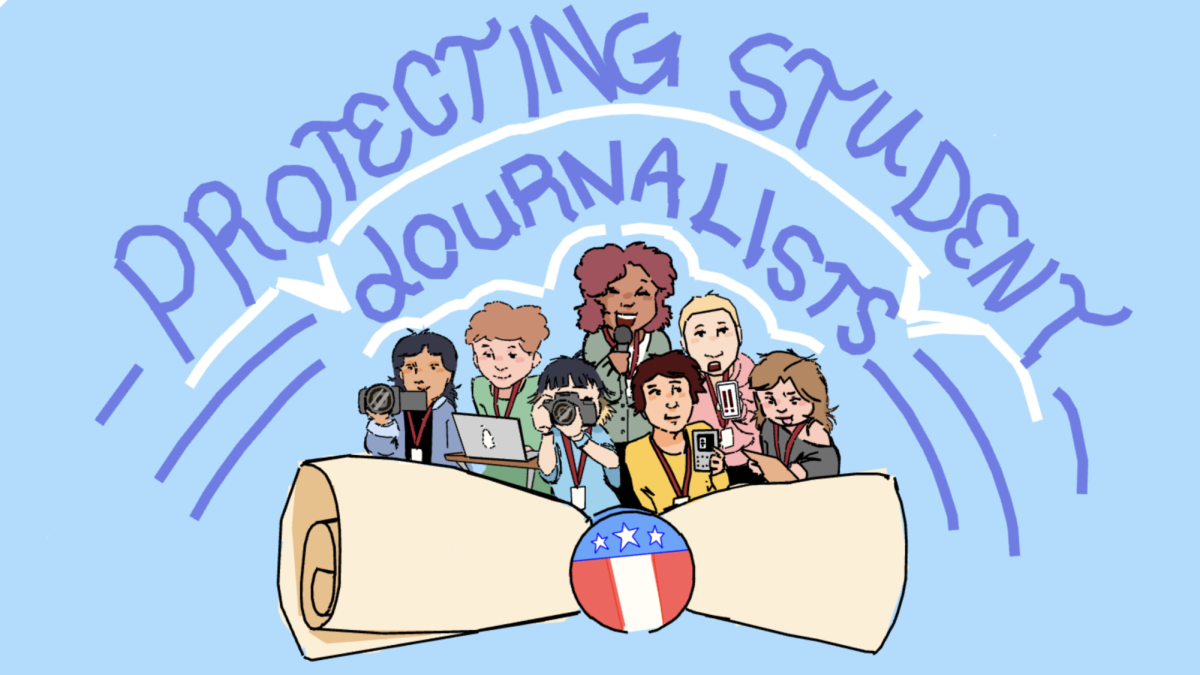[Opinion] Increasing the minimum wage is part of the solution to reducing poverty
Although support for the Raise the Wage Act led to its approval in the House of Representatives, uncertainty lies in whether it reliably results in financial growth or financial instability. Graphic by Melodie Vo
November 22, 2020
For families of higher incomes, it can be hard to imagine life in poverty. With the COVID-19 pandemic remaining as a hazard to people’s economic status and physical health, understanding how poverty occurs and how to mitigate it becomes all the more pressing.
One of the solutions to reduce poverty is increasing the minimum wage. Despite the varying perspectives on the subject, the minimum wage should be increased, as it provides assistance to low income workers. However, its implementation should be well-documented and cautious of possible repercussions, and it should be introduced alongside other solutions to reduce poverty.
The newly introduced Raise the Wage Act attempts to reduce poverty and boost the economy by gradually increasing the federal minimum wage to $15. While the Raise the Wage Act has been approved in the House of Representatives, it has met resistance in the Senate.
For the past 11 years, the federal minimum wage has remained at $7.25 per hour, as regulated by the Fair Labor Standards Act. There are exceptions to the minimum wage, such as tipped workers and recently employed workers under the age of 20. States across America have also implemented their own minimum wage rates, some higher or lower than the federal rate.
Support on increasing the minimum wage is based on the notion that it would incentive for the unemployed to pursue employment and low wage workers to remain in employment. It would also remedy its decrease in value due to inflation and the gradual increase in prices of expenditures.
Opposition to increasing the minimum wage stems from the ideology that the minimum wage combined with social programs provides ample financial security, therefore minimum wage workers, no matter their various positions in life, are able to accumulate wealth. This encapsulates the American dream: work hard and prosper.
It is often based on the claim that the majority of those in poverty are jobless. According to the report, “Employment and Poverty”, from U.C. Davis’s Center for Poverty and Inequality Research, 59.2% of those in poverty from ages 18 to 64 are unemployed. The imagery that follows is of someone that does not contribute to society, unentitled to rewards earned through achievement. They would be discouraged by the increased minimum wage from pursuing higher income jobs.
However, this simplifies whether those in poverty are eligible to be employed in the first place, as 59.8% of those unemployed working-age people cited their reasons for unemployment being due to disability, school and unavailable employment. The figures above do not factor in other reasons for unemployment like taking care of one’s family and illness, both of which are all the more relevant during the COVID-19 pandemic.
Also, a greater income may lift people out of the poverty bracket necessary for them to be applicable for social programs, which negates their increased income due to the drastically increased cost of expenditures like marginal tax rates. This stems from how poverty is measured on income, rather than accounting for the use of social programs, inflation, differing demographics of age, gender, race, location, material possessions and expenditures.
The poverty rate’s tie to employment leaves those who are unable to work without financial support they may need, which is correlated to the requirements of social programs assisting those in poverty. In addition to increasing the minimum wage, other policies must be put into place to account for these constraints to unemployed or less supported populations.
According to the article “The Negative Effects of Minimum Wage Laws,” from Downsizing the Federal Government, increasing the minimum wage causes businesses to create policies like “reducing hiring, cutting employee work hours, reducing benefits, and charging higher prices” in order to maintain their profits and a spectrum of effectiveness in reducing poverty.
Other possible downsides to increasing the minimum wage include the increase of poverty, as individuals facing unemployment may be forced into lower income jobs with fewer benefits. Additionally, the higher prices may be paid by low-income consumers, which detracts from their accumulation of wealth.
In contrast to studies on the growth of unemployment, the report “Are Local Minimum Wages Too High?” from U.C. Berkeley’s Center on Wage and Employment Dynamics concludes that raising the minimum wage is beneficial to those in poverty, as employment would remain stable due to the demand for low-wage workers. Even if the unemployment rate increases, it may be less detrimental when considering that workers facing unemployment may belong to higher income families and the re-hiring of unemployed workers.
Raising the minimum wage can also lead to more productive businesses. The increase in income incentivizes workers from leaving, which allows for employers to spend less money on training and recruiting new employees. With an improved quality of life comes reductions in death and other health issues for both adults and children, which boosts productivity in work, translating to further benefits.
For those who are uncertain of the benefits of increasing the minimum wage, the 2019 Raise the Wage Act requires a report, consultations and studies after the first couple wage increases to be submitted to Congress. The report would review the status of the economy, businesses and people impacted by the act in order to figure out if it is effective and efficient in reducing poverty.
While studies on raising the minimum wage display a variety of effects, many results show that the additional income provides beneficial assistance for those able to work. However, since increasing the federal minimum wage does not fully support those in poverty, and the effects have not been concretely observed due to its non-implementation, it should be applied in combination with other solutions to reduce poverty.
One of these solutions include the expansion of job benefits and reform of welfare programs to convince the idle to work and provide those unable to work with assistance in their responsibilities.
Another solution is to expand education by increasing opportunities and programs for schooling, certifications, degrees, internships and co-ops. Studies indicate that improvements in education correlate to higher rates of mobility, due to students’ gaining of language, technical skill, social connections, experience and general information.
However, increasing the opportunity for education for lower income students should address how America’s education system favors higher social classes, who are less preoccupied with financial and structural insecurity, health issues and other barriers to education, more able to pay off the accumulated debt and more lucrative to institutions based on their prestige.
The reduction of poverty is both intimidating to approach and difficult to solve, yet due to its large impact, it remains an increasingly significant concern. People need to establish a shared factual understanding of the circumstances. From there, one can decide: to what extent are people willing to stagnate social reform due to possible threats to financial growth?











